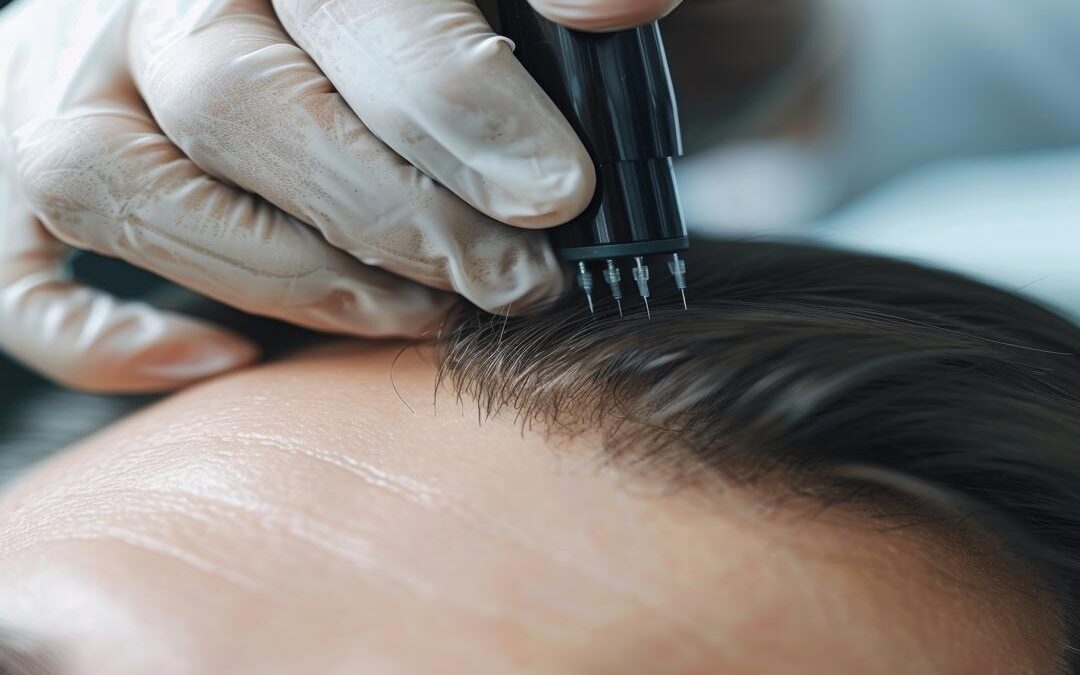Stem cell therapy has revolutionized the field of regenerative medicine, offering new hope for various medical conditions, including skin healing. The topical application of stem cells has shown promising results in enhancing skin healing and reducing recovery time. This article explores the mechanisms, benefits, and applications of stem cell therapy for skin healing, highlighting its potential to transform dermatological care.
Understanding Stem Cell Therapy
Stem cells are undifferentiated cells capable of developing into different cell types. They are fundamental to the body’s ability to regenerate and repair tissues. In skin healing, stem cells can be applied topically to enhance the body’s natural healing processes.
Types of Stem Cells Used in Skin Healing
- Mesenchymal Stem Cells (MSCs): Derived from bone marrow, adipose tissue, and umbilical cord blood, MSCs are known for their ability to differentiate into various cell types, including skin cells. They possess anti-inflammatory properties and secrete growth factors that promote healing.
- Epidermal Stem Cells: Located in the basal layer of the epidermis, these stem cells are crucial for skin regeneration and repair. They play a significant role in maintaining skin integrity and function.
- Induced Pluripotent Stem Cells (iPSCs): These are adult cells reprogrammed to an embryonic-like state. iPSCs have the potential to differentiate into any cell type, including those needed for skin repair.
Mechanisms of Stem Cell-Mediated Skin Healing
Stem cells promote skin healing through several mechanisms:
Anti-Inflammatory Effects
Inflammation is a natural part of the wound-healing process but can become chronic and impede healing. Stem cells release anti-inflammatory cytokines that help reduce inflammation, creating a conducive environment for healing.
Promotion of Collagen Production
Collagen is essential for skin structure and integrity. Stem cells stimulate fibroblasts to produce collagen, which aids in the repair and regeneration of damaged skin.
Angiogenesis
Stem cells promote the formation of new blood vessels (angiogenesis), ensuring an adequate supply of oxygen and nutrients to the healing tissues. This process is crucial for effective wound healing.
Cellular Differentiation
Stem cells can differentiate into various cell types needed for skin repair, including keratinocytes and fibroblasts. This ability accelerates the replacement of damaged cells with healthy ones, enhancing the overall healing process.
Benefits of Topical Stem Cell Therapy for Skin Healing
Topical stem cell therapy offers numerous benefits for skin healing, making it a valuable treatment option in dermatology and regenerative medicine.
Accelerated Wound Healing
One of the most significant benefits of stem cell therapy is the acceleration of wound healing. By promoting cell regeneration, reducing inflammation, and enhancing collagen production, stem cells expedite the healing process, leading to faster recovery times.
Reduced Scarring
Scarring is a common concern in wound healing. Stem cells help modulate the wound-healing process, leading to more organized tissue repair and reduced scar formation. This results in smoother, less noticeable scars.
Enhanced Skin Regeneration
Stem cells not only repair damaged skin but also promote the regeneration of new, healthy skin. This regenerative capability is particularly beneficial for chronic wounds and burns, where traditional treatments may fall short.
Minimally Invasive Treatment
Topical application of stem cells is a minimally invasive procedure, involving the direct application of stem cell-enriched solutions or creams to the affected area. This approach minimizes discomfort and eliminates the need for surgical interventions.
Applications of Stem Cell Therapy in Skin Healing
Stem cell therapy has a wide range of applications in skin healing, addressing various conditions and injuries.
Chronic Wounds
Chronic wounds, such as diabetic ulcers and pressure sores, are notoriously difficult to treat. Stem cell therapy offers a novel solution by enhancing the body’s natural healing mechanisms, promoting faster and more effective wound closure.
Burns
Burn injuries can cause significant damage to the skin and underlying tissues. Stem cell therapy helps accelerate healing, reduce scarring, and restore the skin’s appearance and function.
Surgical Wounds
Post-surgical wound healing can be improved with stem cell therapy, reducing recovery times and minimizing complications. This is particularly beneficial for patients undergoing cosmetic or reconstructive surgery.
Skin Aging
Aging leads to a decline in skin regeneration capabilities, resulting in wrinkles, sagging, and loss of elasticity. Stem cell therapy can rejuvenate aging skin by promoting collagen production and enhancing skin regeneration.
Clinical Evidence and Research
Numerous studies have demonstrated the efficacy of stem cell therapy in skin healing.
Clinical Trials
Clinical trials have shown that stem cell therapy significantly improves wound healing outcomes. For instance, a study published in the Journal of Clinical Investigation found that patients treated with MSCs showed a 50% improvement in wound healing compared to those receiving standard care.
Case Studies
Case studies highlight the practical benefits of stem cell therapy. In one case, a patient with a chronic diabetic ulcer that had not healed for over a year experienced complete wound closure within three months of receiving stem cell treatment.
Considerations and Potential Risks
While stem cell therapy offers numerous benefits, it is essential to consider potential risks and limitations.
Safety and Side Effects
Stem cell therapy is generally considered safe when performed by qualified practitioners. However, potential side effects include mild irritation or redness at the application site. Rarely, there may be a risk of allergic reactions to the topical formulation used.
Cost and Accessibility
The cost of stem cell therapy can be high, which may limit accessibility for some patients. Additionally, the availability of treatment centers offering stem cell therapy may vary by region.
Regulatory and Ethical Considerations
Stem cell therapy is subject to regulatory oversight to ensure safety and efficacy. Patients should seek treatment from reputable providers who adhere to regulatory guidelines and ethical standards.
Topical stem cell therapy represents a significant advancement in the field of skin healing, offering a promising solution for various dermatological conditions. By leveraging the regenerative properties of stem cells, this therapy accelerates wound healing, reduces scarring, and enhances skin regeneration. As research continues to advance, stem cell therapy is poised to become a cornerstone of regenerative medicine, providing new hope for patients with chronic wounds, burns, and other skin injuries.

